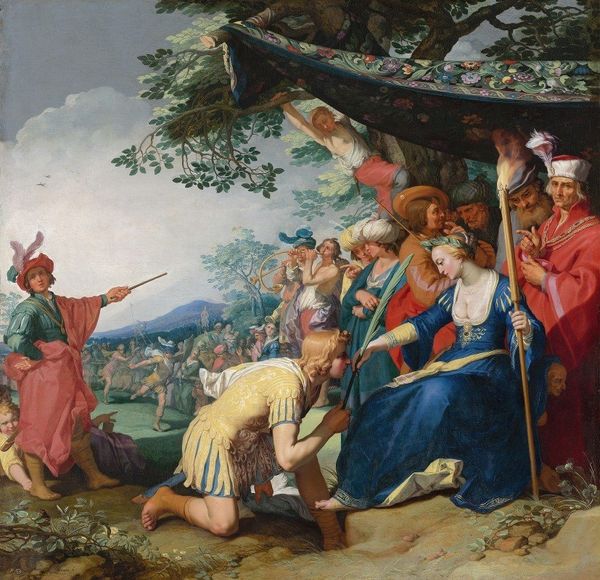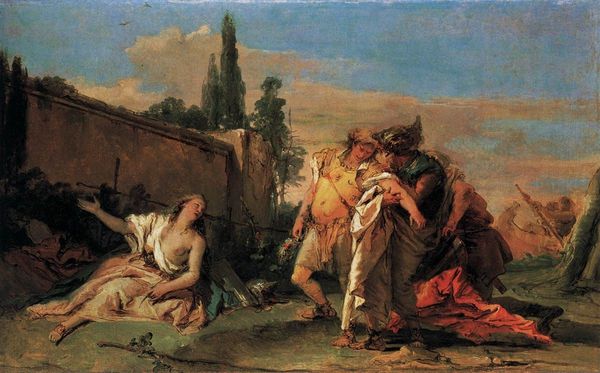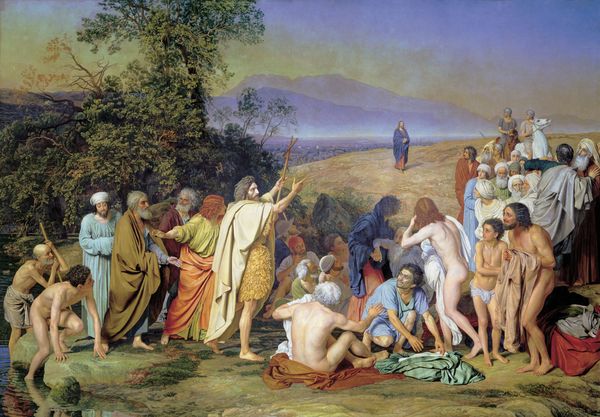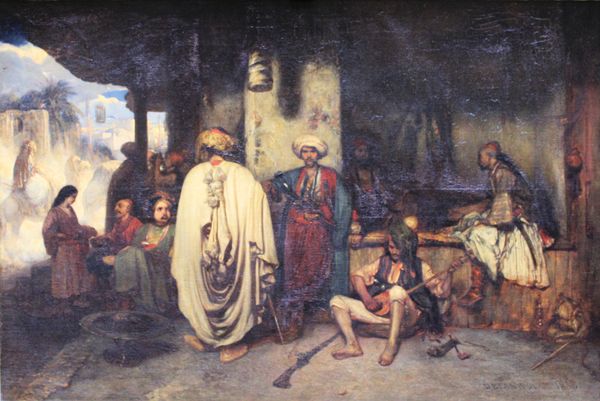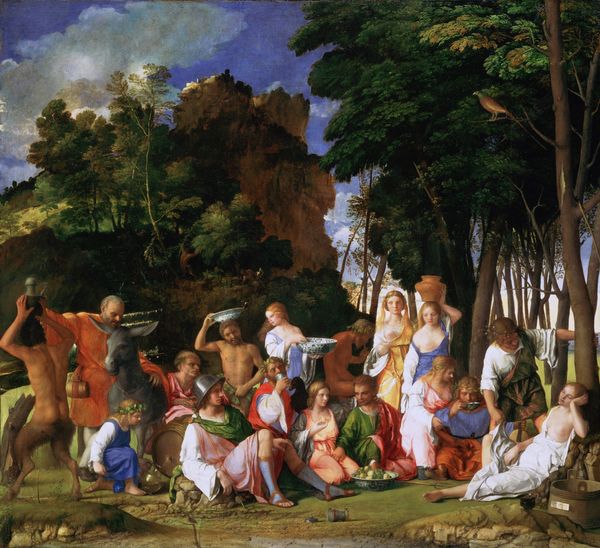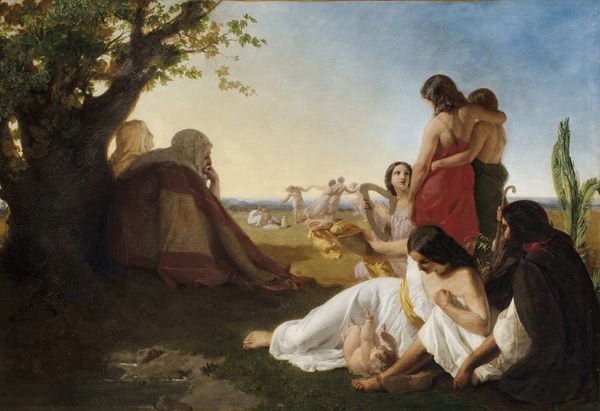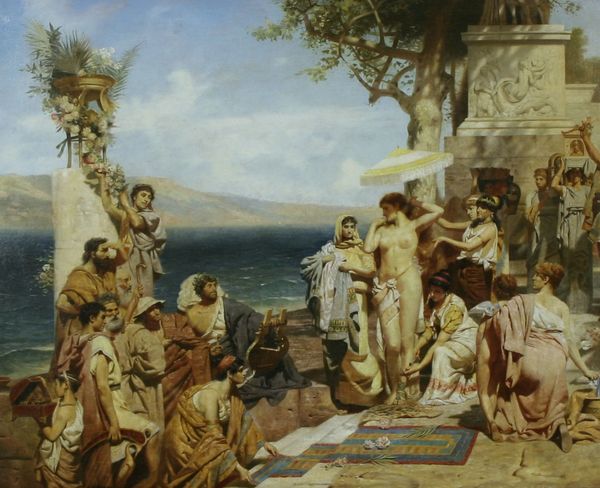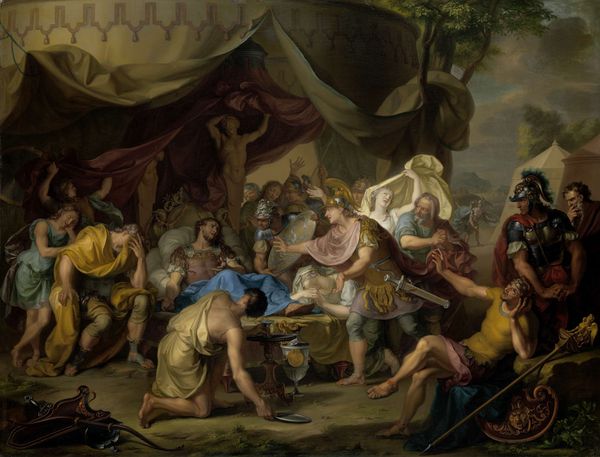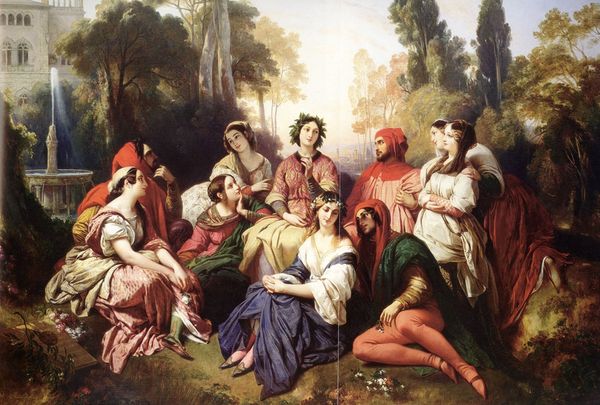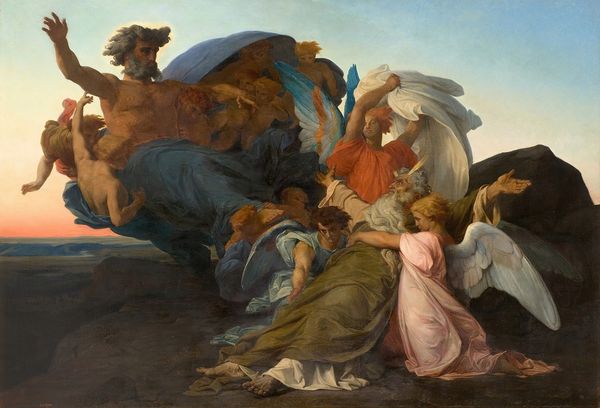
oil-paint
#
portrait
#
oil-paint
#
landscape
#
figuration
#
oil painting
#
group-portraits
#
romanticism
#
costume
#
genre-painting
#
surrealist
Dimensions: 148.6 x 116.8 cm
Copyright: Public domain
Curator: The painting before us is entitled "Il dolce Farniente," created by Franz Xaver Winterhalter in 1836. It is oil on canvas. What's your initial reaction to it? Editor: Visually, it's an incredibly restful image, full of languid figures. The composition almost mimics the concept of leisure, sprawled out and unhurried. The light seems to cradle everyone in comfort. Curator: Absolutely. "Il dolce Farniente" translates to "pleasant idleness," a concept highly romanticized during the 19th century, particularly in depictions of Italian life. We see a group enjoying leisure, highlighting a vision of Southern European existence appealing to northern audiences. Consider also how such depictions often played into and perpetuated certain stereotypes of Italians as lazy or unindustrious. Editor: That's an important point. Art often reinforced socio-political power dynamics. Stripping that context away, Winterhalter's technical skill is undeniable. The fabric folds, the individual expressions… even the distant, hazy Vesuvius contributes to a complete sense of place. He’s not just painting figures, he’s constructing an atmosphere of indulgent ease through light and shadow. Curator: Winterhalter understood his market well. The Romantic era longed for the exotic and the picturesque, often filtered through a lens of privilege and idealization. Genre painting, as it’s known, thrived in this environment because paintings like this provided glimpses into other lives, lives that often contrasted starkly with the realities of industrializing Europe. Editor: True, yet even knowing the loaded implications of that 'exoticism', I cannot deny that he manages a really masterful handling of color. Notice how the muted blues of the distant sea compliment the earthier tones of clothing and landscape to intensify this visual atmosphere of warmth and relaxation. Curator: Ultimately, "Il dolce Farniente" stands as a complex record, mirroring both an artist's skillful technique and a culture's sometimes problematic fascination with otherness and ideas of leisurely living. Editor: Agreed. Deconstructing these images—and considering all these elements, aesthetic and contextual—that's where art really begins to engage and provoke.
Comments
No comments
Be the first to comment and join the conversation on the ultimate creative platform.
